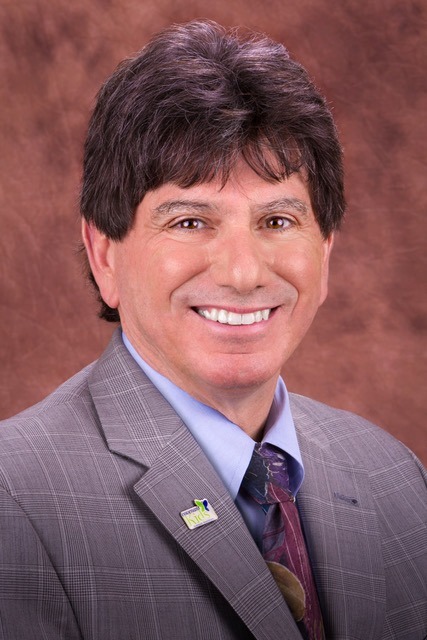Covenant HealthCare Turns to an Almost-Forgotten TV Format to Introduce a New Kind of Health Care Delivery System
Notable Health Care Advertising
// By Peter Hochstein //
 For readers younger than 45 or so, this story requires a bit of history.
For readers younger than 45 or so, this story requires a bit of history.
In the 1960s, the “slice of life” TV commercial (or “slice” for short) dominated America’s TV screens. The formula, most often used to sell detergents, toothpaste, food products, and other packaged goods, worked this way:
A problem, not terribly grave, got raised in a 30- or 60-second mini-drama. For example, “Darn! I just washed this blouse, and it still looks dingy.”
A solution — a product — was proposed by a friend, family member, or some kind of “expert,” who might, depending on the problem, be anyone from a quirky plumber pitching Ajax cleanser to a butcher touting Shake ‘n Bake. A demonstration in the middle of the teleplay exhibited how or why the product worked. And then there was often a little dramatic finale, after which everybody presumably lived happily ever after.
Most of these slice-of-life spots were notoriously hokey. But there were only three networks getting the bulk of the attention in most markets, and TV remote controls were yet to arrive. That may be why most people chose to sit through the advertising, rather than get up from the couch to rotate the channel knob, adjust the rabbit ears atop the TV, and see what else was doing.
The “slice” format hung on stubbornly through the 1980s, but by 1990 it was pretty much history. You can see some examples of the genre here:
Now the slice-of-life format, revised and updated, has emerged in a compelling (and very funny) TV spot for three-campus, 643-bed Covenant HealthCare of Saginaw, Michigan. Its purpose is to begin familiarizing potential patients with Covenant “VirtualCare” medical consultations over the internet.
Enter a new kind of problem-solution slice of life.
The problem this time? A girl, about 4 years old, has an itchy rash. Her brother, perhaps 12, looks for a diagnosis on the internet (which is another part of the problem) and declares, “Could be bedbugs.” The disgusted little girl runs to her mom, who uses a tablet to have a “real-time video doctor visit” (the solution) via Covenant VirtualCare. The doctor interacts with Mom and shows how to use a salve (the demonstration of how VirtualCare works.) The finale?
The little girl returns triumphantly to her big brother and announces that her ailment is only poison ivy. And then she aims a withering, one-word putdown at her older sibling that leaves us laughing. Watch it here:
The spot is part of an advertising effort that has also included Pandora radio, outdoor advertising, email, social media, Google Search, promoted posts, and blog ads. The target is millennial moms of child-rearing age, and “older people who have some mobility issues,” says Julia Mastropaolo, partner and healthcare director at Brogan & Partners, Covenant HealthCare’s advertising agency in Birmingham, Michigan.

Larry Daly, director of planning & business development at Covenant HealthCare
Larry Daly, director of planning & business development at Covenant HealthCare, explains why this advertising effort matters.
“We’ve been hearing about virtual care for over a decade,” Daly says, and “it really hasn’t come into its own yet. But there’s going to be a tipping point. We want to be on the advance side of the tipping point, not lagging behind and playing catch-up.” For that reason, he says, “A lot of the call to action in our [latest] radio campaign is to download [the app] now, so when you need it, it’ll be at your fingertips. We changed to that call to action just for that particularly reason.”
The campaign’s costs are modest. “We spent since we launched [in fall 2016] about $160,000,” Daly says. A lot of the advertising, he points out, is designed to help people understand what the product is and what it can do. As of February, he says, there had been 2,200 downloads of the VirtualCare app. Further, he adds, “We’ve probably had the most visits the last two months [January and February] than we had the first year. It takes awhile for people to get it, but now it’s catching on.”
The numbers grow more impressive when you realize they’re for Saginaw, a city with a population under 50,000, and surrounding rural counties.

Julia Mastropaolo, partner and healthcare director at Brogan & Partners
Part of the power of the advertising is the demonstration within the slice-of-life format, says Mastropaolo. “Demonstrations have a place, especially when you’re talking about technology and you’ve got a barrier as to what this new thing is and how it works.” In fact, she says after a moment’s reflection, “It kind of had to be a demonstration.”
But other advertising elements also fit the slice format nicely. One of them, says Mastropaolo, was “finding what it is that everyone can relate to. In this case, it’s the first place we go for a diagnosis — ‘Dr. Google.’ We had some fun with that reality.” The agency was also having fun with sibling rivalry, and that most people know “that our children are better at technology than we are, usually.”
Let’s leave the last thought to Laurie Hix, creative director at Brogan, who believes that “there are three ways to break through” to consumers in hospital advertising: “The mind, the heart, or the funny bone. In this case, it’s connecting with the funny bone and making somebody laugh.”
Will the Old Slice-of-Life Plus Demo Formula Work for You? Not Always.
Demonstrations are great — when you’ve got something tangible to demonstrate. But that’s not always the case. The introduction of Covenant HealthCare’s VirtualCare was one of those times “when you know you have to do a demo,” Hix says.
Mastropaolo adds: “We wanted to show it was easy. Your kids could be in their pajamas. You don’t have to leave if you have a child in the other room. And we wanted to couch that demonstration in an interesting story.”
Additionally, humor based on situations that look and sound authentic may be one of the few ways to keep a slice-of-life format spot from looking like a retread of a 1963 toothpaste commercial. But Mastropaolo says that “humor is tricky in health care marketing and advertising because we’re often talking about illness, and life and death.” This spot works, Mastropaolo says, because of the adorable girl and a situation that isn’t a life-or-death matter.
Peter Hochstein is a direct-response advertising consultant, business journalist, and author. He is the author of Lessons from 9 Innovative Health Care Marketing Campaigns. You can reach him through his website: http://peterhochstein.com.

